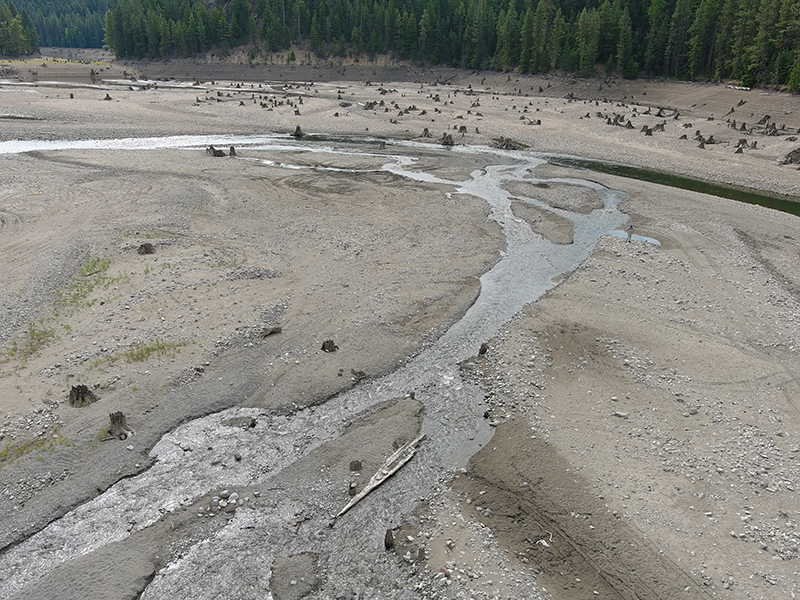
Indian Creek, in the Yakima Watershed, exhibits low streamflows during the 2023 drought which was declared in 12 watersheds throughout the state. Photo Courtesy Washington Department of Fish and Wildlife
Even surprise droughts aren’t surprising anymore. Washington has recently seen a pattern of increasing droughts in the face of a warming climate.
In 2015, the state experienced its first severe drought in almost a decade. It was a snow drought, caused when precipitation that traditionally fell as snow, instead fell as rain. It’s still considered by many experts to be the “drought of record” — the one to which they compare all other droughts.
In 2019, a drought that started in just a couple of watersheds was eventually expanded to half the state.
In 2021, we had a surprise drought late in the season when a lack of precipitation coupled with a “heat dome” event resulted in a drought declaration that covered most of the state, excluding the Seattle, Tacoma, and Everett metropolitan areas.
Also surprising was this year’s drought, when almost half of snowpack was lost in a three-week May heatwave. While in many respects the current drought has been less severe than some others, May through August has been the 9th driest such period on record — even drier than 2015.
Over the course of these four droughts, we've distributed more than $8.4 million in emergency drought grants.
As the effects of climate change continue to manifest, the state can expect warmer winters and more snow droughts. According to a 2019 research paper, by 2050 snow droughts can be expected almost every other year.
“We’re no longer waiting for climate change to manifest,” said Ecology’s Water Resources Program Manager Ria Berns. “The climate is changing and we’re seeing very real impact not only on current water supplies, but on Washington’s future water security.”
The time for reacting to drought emergencies is over
“Droughts are increasing in frequency and severity. We can’t continue to simply react to droughts as they occur,” Berns said. “It’s time to invest in climate resiliency for local communities and help them withstand impacts of a changing climate and enhance water security for generations to come.”
To jumpstart this work, Ecology will make $1.8 million available in state-wide grants to incentivize, facilitate, and increase local drought preparedness. Ecology will begin accepting competitive grant applications on January 16, 2024, and will begin issuing these local grants in summer 2024.
The grants will facilitate increased local drought resiliency and water supply security by funding the preparation of “Local Drought Preparedness Plans.”
These plans will identify the specific actions, associated costs, and timeframes a local community intends to take to increase its water supply security as the climate changes.
After completing the environmental justice assessment required by the state’s historic 2021 Healthy Environment for All Act, Ecology will publish guidance for the grants outlining eligibility and the application process in December of this year.
Ecology will host an applicant workshop in January 2024. It will be both in person and on-line. It will be recorded for later viewing.
For more information and updates about drought planning and preparedness grants, visit our Drought Preparedness and Response page.

